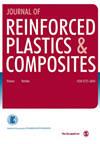粘合剂粘接复合材料接头的进展:全面回顾
IF 2.2
3区 材料科学
Q3 MATERIALS SCIENCE, COMPOSITES
引用次数: 0
摘要
在众多连接技术中,粘合剂连接技术因其与传统连接技术相比的诸多优势而被广泛用于连接复杂的大型复合材料结构。本文深入分析了改善复合材料连接性能的各种技术,如粘接方法(二次粘接、共粘接、共固化和多材料粘接)、表面改性技术(等离子体、激光表面处理、表面研磨等)、附加增强技术(Z 形销、金属丝网、纳米填料等)和不同的连接几何形状(阶梯连接、半阶梯连接、平衡连接和围巾连接)。此外,还详细研究了各种粘合剂和制造技术对基于 CFRP 和 GFRP 的接头的静态和动态性能的影响。此外,本综述还探讨了粘接接头的有限元建模和优化技术。研究发现,粘接方法、提高粘合剂粗糙度的表面改性、纳米填料的添加以及接头几何形状的变化会极大地影响玻璃钢复合材料接头的剪切强度、断裂韧性、疲劳和振动性能。本文章由计算机程序翻译,如有差异,请以英文原文为准。
Progress in adhesive-bonded composite joints: A comprehensive review
Among the myriad joining techniques, the adhesive bonding technique is widely used to join complex large-scale composite structures because of its numerous advantages compared to traditional joining techniques. This article profusely analysed the various techniques for ameliorating the performance of composite joints, such as bonding methods (secondary bonding, co-bonding, co-curing, and multi-material bonding), surface modification techniques (plasma, laser surface treatment, surface grinding, etc.), additional reinforcement techniques (Z pin, wire mesh, nanofiller, etc), and different joint geometries (stepped joints, half-stepped joints, balanced joints, and scarf joints). Also, the effect of various adhesives and fabrication techniques on the static and dynamic performance of CFRP and GFRP-based joints was studied in detail. Moreover, this review addresses the finite element modelling and optimisation techniques on adhesively bonded joints. It has been observed that the bonding methods, surface modification to enhance the roughness of the adherend, addition of nanofillers, and variations in joint geometry greatly influence the shear strength, fracture toughness, fatigue, and vibration behaviour of FRP composite joints.
求助全文
通过发布文献求助,成功后即可免费获取论文全文。
去求助
来源期刊

Journal of Reinforced Plastics and Composites
工程技术-材料科学:复合
CiteScore
5.40
自引率
6.50%
发文量
82
审稿时长
1.3 months
期刊介绍:
The Journal of Reinforced Plastics and Composites is a fully peer-reviewed international journal that publishes original research and review articles on a broad range of today''s reinforced plastics and composites including areas in:
Constituent materials: matrix materials, reinforcements and coatings.
Properties and performance: The results of testing, predictive models, and in-service evaluation of a wide range of materials are published, providing the reader with extensive properties data for reference.
Analysis and design: Frequency reports on these subjects inform the reader of analytical techniques, design processes and the many design options available in materials composition.
Processing and fabrication: There is increased interest among materials engineers in cost-effective processing.
Applications: Reports on new materials R&D are often related to the service requirements of specific application areas, such as automotive, marine, construction and aviation.
Reports on special topics are regularly included such as recycling, environmental effects, novel materials, computer-aided design, predictive modelling, and "smart" composite materials.
"The articles in the Journal of Reinforced Plastics and Products are must reading for engineers in industry and for researchers working on leading edge problems" Professor Emeritus Stephen W Tsai National Sun Yat-sen University, Taiwan
This journal is a member of the Committee on Publication Ethics (COPE).
 求助内容:
求助内容: 应助结果提醒方式:
应助结果提醒方式:


